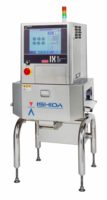2020 Vision: Four Emerging Packaging Trends and X-ray Applications

Looking ahead to the approaching new decade, shifting consumer demands will drive changes in packaging and, along with those changes, the way that manufacturers inspect packaged goods for quality and safety. According to Simon King, head of global sales, service, and marketing for Eagle Product Inspection, new packaging and accompanying X-ray inspection capabilities will be designed based on what consumers seek and expect.
“Consumers are already impacting changes in packaging, such as the push for more sustainable materials and packages that meet a particular need, like single-serve packages for on-the-go consumption and multi-compartment packaging for convenient ready meals. You can expect more of that in 2020 and beyond,” King says. “Inspection technologies are keeping pace with and are often in front of such market forces to help manufacturers reach their goal of providing safe, satisfying products.”
King shares Eagle’s predictions on emerging packaging and inspection trends for 2020, along with examples of solutions:
Versatility: As food and beverage manufacturers produce a greater and more diverse range of offerings, they will seek versatile systems that allow for different package formats and easy changeover. “There will also be a greater degree of line consolidation, as manufacturers work to get more out of their systems. That ties into versatility as well,” King says. To meet demands for such versatility, Eagle continually updates its inspection technologies, with new systems like the EPX100, used to inspect a broad range of hard-to-find contaminants in a variety of packaging formats, using adjustable power settings.
Speed: “Food and beverage companies will also strive for increased throughput rates,” says King. To keep up with demand from retail and foodservice customers, manufacturers will invest in equipment that maximizes line efficiencies and uptime. For inspection systems, that means X-ray equipment that can keep up with targeted throughput without sacrificing accuracy, and that offers better overall equipment effectiveness to run optimally as long as possible. Eagle’s solutions include the Pack 320 PRO, capable of high-speed imaging up to 120 meters per minute.
Automation: As manufacturers run faster and more nimble operations, they are also operating leaner, in an economy with low unemployment and high turnover rates. Greater automation and the utilization of robotics will become more common in such settings, according to King, but such features need to be integrated with inline inspection systems to ensure that contaminants are found and removed and that quality checks, like component count, mass measurement, product integrity and more, are regularly and properly conducted. In addition to advanced inspection equipment that can be integrated with other automated systems, Eagle offers advanced software for automatic data collection and storage, such as its SimulTask™ PRO X-ray image analysis software and TraceServer™ software that retains the product image and associated information and stores it in a centralized database.
Responsible packaging: More than two-thirds or 68 percent of consumers say it’s important for them to choose “responsibly packaged” foods or beverages, according to a recent Evergreen Packaging report on packaging trends. Responsible packaging encompasses various elements of packaging, including more sustainable materials and formats, as well as products packaged in a way that ensures quality, integrity, and safety for the end-user.
Accordingly, many companies have announced packaging changes as part of their overall drive toward responsibility, and are working with or pursuing new materials and forms, including packaging made from renewable materials or recyclable materials. Today’s X-ray systems are versatile enough to inspect a variety of package types, including flexible and rigid packaging and the many formats that fall under those categories. Advanced inspection covers another facet of responsible food and beverage production and packaging: food safety and quality that can be traced and verified. X-ray systems driven by powerful software allow manufacturers to provide more information about the products and traceback packages to the point of inspection, with important production information and images. “It’s not mandatory yet to have item-level traceability for food and beverage products, but with the increased complexity and demands on the supply chain, manufacturers are looking for solutions to meet these needs,” says King.
Eagle Product Inspection | EaglePI.com | 877-379-1670
Looking for a reprint of this article?
From high-res PDFs to custom plaques, order your copy today!





